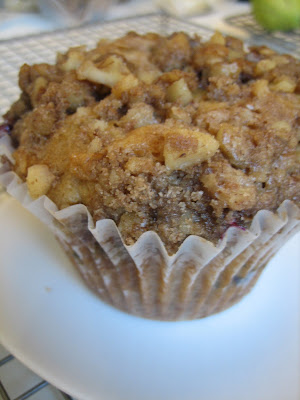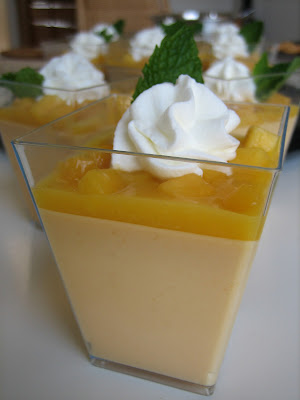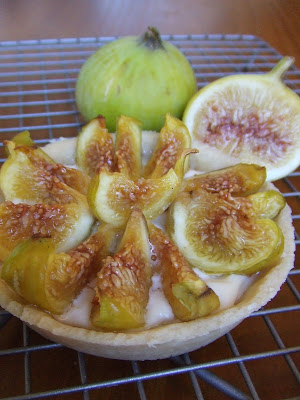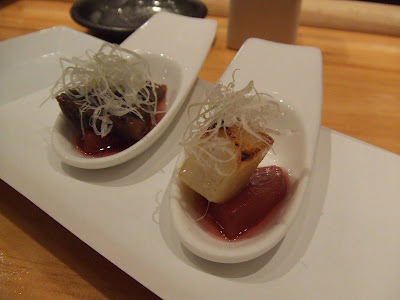 |
| I forgot to take my camera to class AND I deleted the first set of pictures I took accidentally so please bear with the sparse picture selection... |
So, I decided to just go for it and signed up to take New School of Cooking’s Pro I Baking course. It meets every Sunday morning for 10 weeks and it’s pricey, but it’s perfect for someone like me who can’t afford to attend a full time CIA or Le Cordon Bleu type school. Although Le Cordon Bleu in Hollywood has a Food History course I’m DYING to take...
 |
| Streusel topping! |
Anyhoo, Class 1 started off with Quickbreads. Technically, a quickbread is a bread or cake that uses a chemical leavener. That basically amounts to muffins, carrot cakes, biscuits, and scones, among others.
After the lecture that went into much more detail that that one measly sentence above, our teacher Carol walked through making a carrot cake. Then she demonstrated how to make currant scones and blueberry streusel muffins. After that, we were off measuring and mixing and making our own scones and muffins. We got to taste her carrot cake but the making part was homework, although in this class, homework is a loose term. It's not exactly required so it just depends on if you feel like practicing or not.
How did everything turn out you ask?
The blueberry muffin was perfectly moist, not too sweet, with a walnut streusel. I love streusel topping, although I prefer an oat based one over a nut based one, but who can say no to butter, sugar, and nuts? It was a good, solid blueberry muffin, but not my favorite. I think I like creamed ones more, ones that use butter instead of oil. But I have to try another recipe before I can be sure. My friends who tried these raved about them though. They're definitely better than Starbucks, that's for sure.
 |
| Currants, with little flecks of orange zest |
As for the scones--the texture of these little guys was the best I’ve ever made. They didn't turn out very pretty and my squares ended up a bit odd shaped, but they were moist while being the right amount of crumbly with that crust. I could do without the sugar topping though. Next time, I'm going with an egg wash to get that golden colored top. Practice makes perfect so I'll get cracking on these.
 |
| Definitely don't need extra butter on these guys! |
I'm excited to try making the carrot cake. The one Teacher baked in class was ridiculously moist, spiced, and just really yummy. Usually I need a lot of cream cheese frosting to mask the mediocre quality of the carrot cake layer(s), but not in this one. I can see why The Appropriated Muffin posted the recipe on her site. That's where I first read about it. She called it the best carrot cake ever so I was going to try it but then the class came up. Now I know where the recipe is from and I'm excited to try it myself, especially since I can't remember the last time I made carrot cake.
Time for some homework!





















































